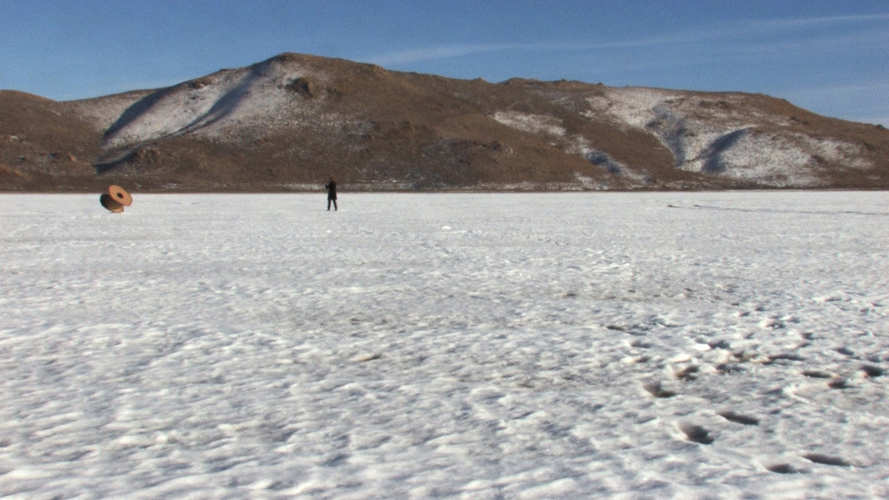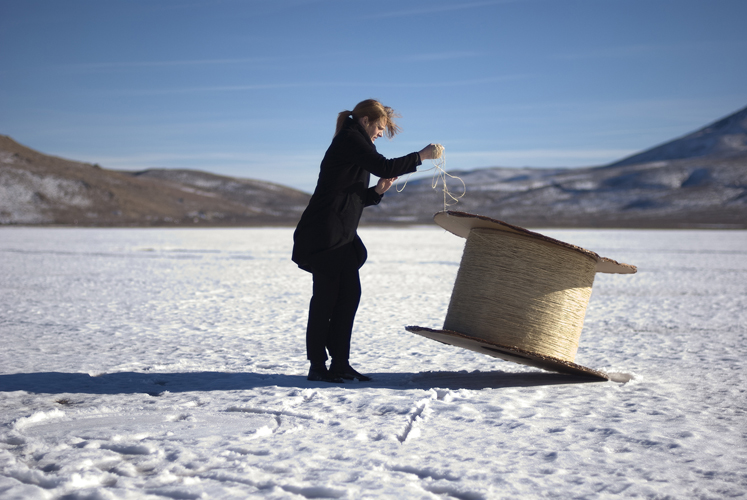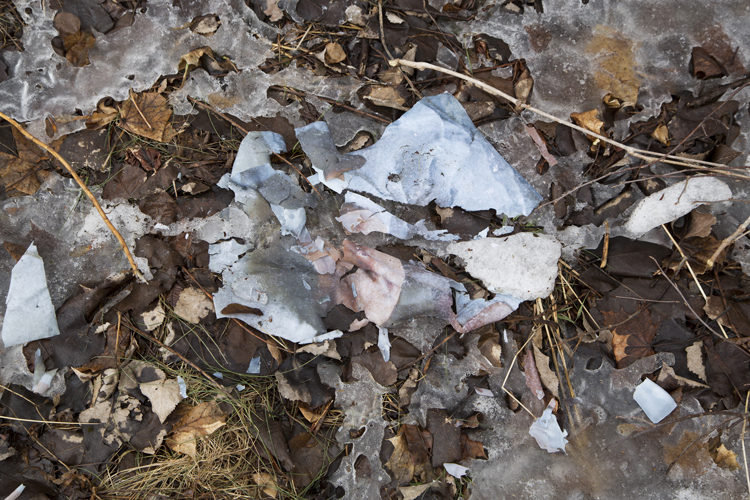Q&A: Erin Elyse Burns
By Rafael Soldi | May 12, 2018
Erin Elyse Burns was raised in Reno, Nevada. She earned her BFA from the University of Nevada, has lived and worked in Basel, Switzerland and Berlin, Germany and has exhibited her work internationally. She completed her MFA at the University of Washington and currently resides in Seattle where she is an Assistant Professor in the Foundations Program of the Art Department at Cornish College of the Arts.
Burns’ artwork occupies territory between image, performance and artifact. The content of her artwork is often influenced by an attraction to overwhelming landscapes. She is often cast as a solitary figure within these environments in order to create experiences that evoke a sense of the picturesque, the humorous, the vulnerable and the absurd. She creates objects that are given life and context when activated in front of the camera. Concepts of private ritual, identity, physicality and fascinations with the process of learning and failure persist within her work.
© Erin Elyse Burns, Learning To Fly video still
Rafael Soldi: Tell us about your path so far as an artist. Where did you start and what do you find yourself doing now?
Erin Elyse Burns: Like many artists, I started making as early as I can remember. Drawing portraits during recess in elementary school as a way to make friends. Being the kid that always had a 35mm camera around my neck. Formally, I received my BFA from the University of Nevada, Reno—one of two public universities in my home state. It was an interdisciplinary arts program, and I split most of my time between painting and analogue photography classes. I also took courses in performance art, sculpture, and printmaking, which were all influential and the program itself was very rigorous. After finishing my BFA, I worked at the Nevada Arts Council doing exhibition programming across the state. From there, I moved to Basel, Switzerland to work at a non-profit new media art institution called Plug.In Art and New Media. That was a hugely formative time—I worked at Art Basel, was exposed to incredible work and artists from around the world. I left Basel to get my MFA in Seattle, in the Photomedia program at the University of Washington’s School of Art. I thought I’d leave Seattle for Berlin (I lived there for a short time while abroad) but I ended up staying put, with a great arts community in Seattle, amazing teaching opportunities, and the gorgeous landscape here! I’m currently an Assistant Professor at Cornish College of the Arts – a brand new appointment—I’m thrilled. I show my work regularly around Seattle, nationally, and internationally. I had my first international solo show in Sweden last year.
RS: As an interdisciplinary artist, your medium varies, though generally speaking in your practice the camera operates as a witness to actions you have created for it. Can you elaborate on your relationship to medium?
EEB: I was trained within a fairly traditional undergraduate photography program but as I mentioned, I’ve always worked in an interdisciplinary way. The first bodies of work I made outside of school were performative self-portraits that combined painting, handmade sculpture, and medium format film photography in laborious ways. Think minimalist Sandy Skoglund, Pop Art, and Cindy Sherman… This is to say I engage with the medium of photography from a pretty manual perspective. I love controlling the camera by hand, only started shooting digitally in 2008, and got a smartphone not too long ago! I think of its camera as a sketchbook.
That labor intensive manner of working typical of early projects, I think, wore me out and ultimately didn’t necessarily support the content of my work, so I stopped photographing in the lighting studio and started working outdoors with more minimal setups for the camera that were idea driven. I’m very much a “picture maker” not a “picture taker,” or as we’ve discussed, I’m a Szarkowski mirror, not a window. In terms of deciding if a project will be a photograph, a video, or a performance piece—which are my primary mediums of choice – it’s an intuitive decision making process and usually the idea behind the work necessitates which medium will be best.
© Erin Elyse Burns, Unfolding
RS: Do you think of the figure in your work as a self-portrait, or are you an actor? Is there a common goal for this figure as it engages with the landscape? How has this evolved over the years in your work?
EEB: In that earlier work, I thought of the photographs as some kind of self-portraiture, yet I have always been acting for the camera, setting the image up, and extending that sense of self in stylized, aesthetic ways that have little to do with a descriptive sense of my character. I think of that aspect of my work as a sort of an identity Venn diagram with some compelling tension. I’m a figure, a subject, an actor, yet the subject has to be me. This is driven by the fact that the work often comes out of the desire to have certain experiences and to make that experience an occasion to create art. What will it feel like to cry in front of a video camera, take after take? What is the experience of crawling across Icelandic kelp formations at low tide, in below freezing weather? What can I learn, and how can that process inform my work? What can it teach me about life, about myself? These are introspective questions that are often the impetus of a project, and then how the content of the piece evolves out of that inquiry is another process. How I cast myself as a subject in the work has evolved a lot over the years, and yet there’s cohesion too. My approach has shifted from a distanced, third person perspective, to intimate first person perspectives, and many variants in between.
RS: Much of your work involves endurance—from hiking the Pacific Crest Trail, to unwinding three miles of rope from a giant handmade spool, or walking your 45-mile commute in 17 hours on foot. What draws you to endurance activities in your work? Where did you first learn about the long history of endurance, performance, and conceptual art?
EEB: Regardless of the activity, I have a tendency to gravitate towards extremes. I’m willing to go pretty deep and immerse myself in new experiences. I’m attracted to steep learning curves and dramatic change. I believe those characteristics are part of what draws me to endurance works. I’m interested in what the limits of an experience are, the limits of the body, the mind. I first studied performance art during my BFA at UNR and had a lot of wonderful classes on contemporary art history from scholar and performance artist Dr. Joanna Frueh, who was a huge influence on my thinking at that time. The performance art class I took with her is an experience I still draw upon so many years later. I deepened my relationship to all of these topics in graduate school at UW and started to really hone in on source material and making work that was in line with my conceptual interests from then onward.
RS: Three of your recent works—Freeze and Thaw: Remission, Recurrence, On Borrowed Time, and Gather—specifically address your mother—your relationship with her, her illness, and eventually her passing. How has this affected your practice?
EEB: Beyond being my own subject, my mom is the first person to really figure heavily in my work. This makes a lot of sense to me because she gave me my life. It has definitely shifted the trajectory of my work, and starting with Freeze and Thaw, brought a personal level of content that is heavily autobiographical – mom wasn’t acting for the camera there. Initially that felt so raw and vulnerable to me, because of the lack of staging, the lack of conceptual distance, and because the work deals with her cancer and death directly. That said, I think in all of these projects, it has been my intention that the work moves beyond my mom’s story, and becomes a mirror for viewers to reflect on their own relationships to life cycles, to mortality. I’ve been grateful that this has been the dominant response I receive from viewers.
© Erin Elyse Burns, Gather
RS: Your most recent piece, Gather, is probably one of my favorite works you've completed yet. Can you share what this piece is about?
EEB: Gather was a one-day site-specific performance piece that took place on a 4.5 mile walking path loop in Seattle’s Discovery Park on March 4th, 2018. This date marked the one-year anniversary of my mom’s death. Over several months prior to the performance, I created a single stretch of black satin ribbon—five miles long—to lie out on the path.
After On Borrowed Time and for a while prior to that project, I’d become interested in Victorian Era mourning practices – how open and, from a contemporary perspective, even obsessed the culture was with rituals surrounding death. I thought of the black ribbon as a reference to that, and as a way to lift the black outline I’d been using in On Borrowed Time and walk that line in physical space. I thought of the line as referencing family lineage and lifelines too, as well as the tradition of wearing a black band around one’s arm after a death.
The Gather performance began with me walking the path on one end of the loop, gathering the ribbon alone. On the other end, a group of invited participants walked together, collaboratively gathering as they went. We eventually met at a mid-point. It was at this ideal vista in the center of the park – the timing couldn’t have been planned, but it was perfect. At the meeting, I gave the group my burden of the ribbon, which was about 50lbs at that point, to carry for me. After we completed our respective walks, we reconvened under a tree on the path to hold a reception. I set the ribbon up as a sculpture to view, along with the performance instructions and decorum cards, and we had photographs from the day on iPads to view. If you’re interested in hearing more about Gather there’s an abbreviated and extensive interview I did with Forrest Perrine, who is the curator of an alternative art platform called Outer Space, that presented the piece.
RS: What are you obsessed with right now?
EEB: Summer! I’m not teaching during summer break, and I’m really enjoying getting into all the little mundane tasks I put off during the school year. Backing up hard drives, photos to the cloud, cleaning up my phone, the studio, finishing up loose ends to projects, and cleaning out clutter from my life. It feels so good. I have more time to read too. I just finished Eula Biss’s Notes from No Man’s Land, which I can’t recommend enough. It’s a collection of essays on race that I think should be required reading. I also just finished Leslie Jamison’s tome of a memoir, The Recovering, which was brilliant and revelatory. If you’re new to her writing, I heavily recommend The Empathy Exams as a first read. I’m learning to play the dobro (a resonator guitar—like an acoustic lap steel) and am pretty thrilled to have it as a hobby. This means I listen to a lot of twangy sad honky-tonk from the ‘50s and ‘60s. I have to plug Paul Berger’s MULTIPLEX monograph that was just released by Minor Matters Books and upon first browse, is exquisite. A legacy photographer for sure, and I’m so thankful I was able to study under him. What else… Gardening, and summer fruit. I’m so excited to have seasonal berries back in my life.
All images © Erin Elyse Burns
© Erin Elyse Burns, Three Miles (The Unwinding) video still
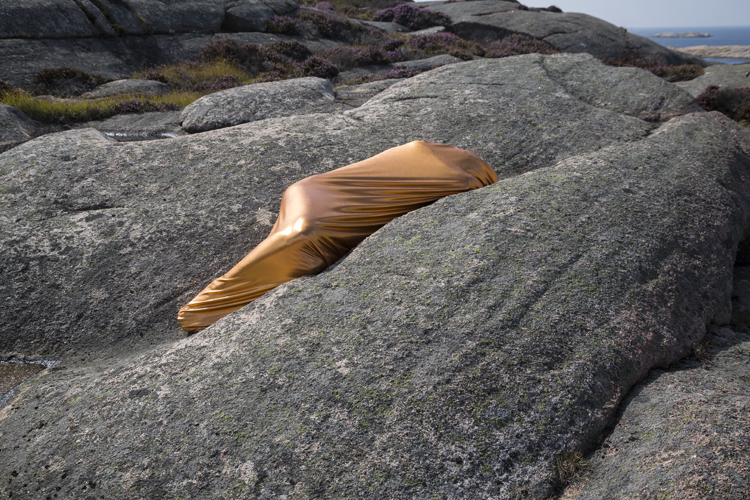
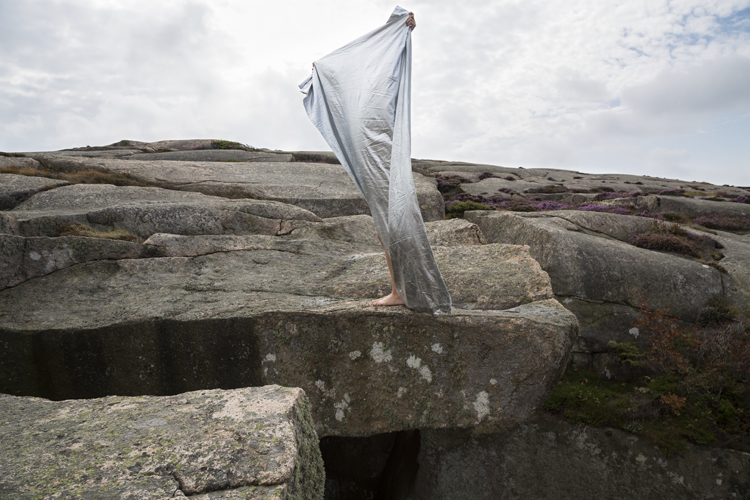
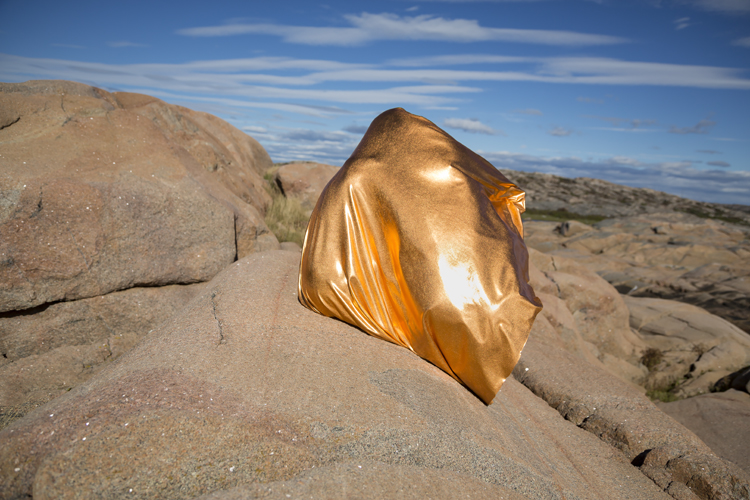
© Erin Elyse Burns, Beyond the Veil
© Erin Elyse Burns, Freeze and Thaw: Remission, Recurrence


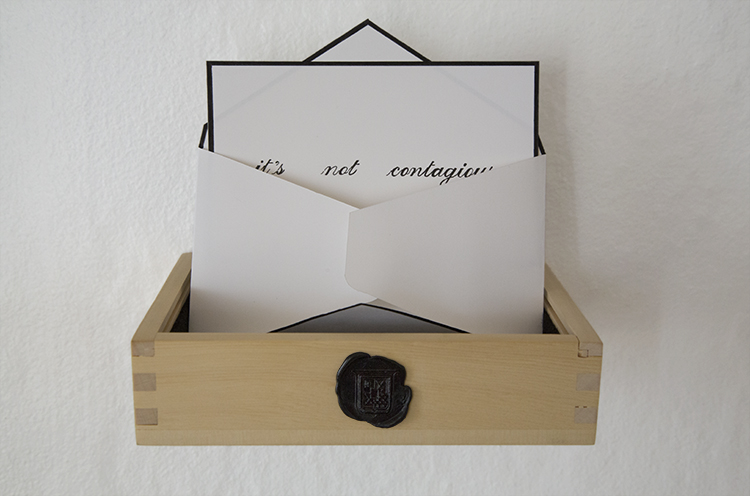

© Erin Elyse Burns, On Borrowed Time
© Erin Elyse Burns, Tumbleweed Trundling
© Erin Elyse Burns, One Thing at a Time
© Erin Elyse Burns, Litany


